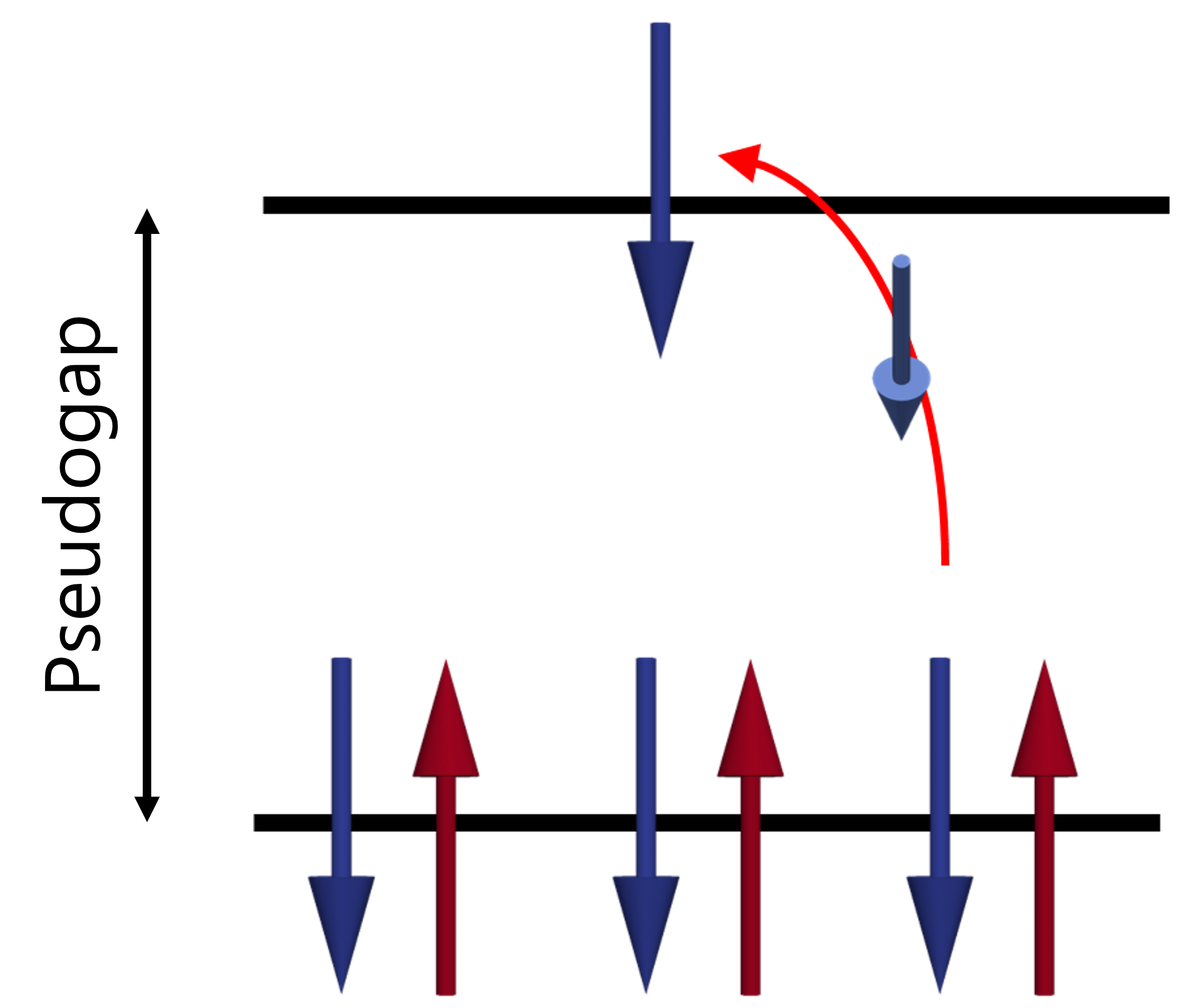Transition metal dichalcogenides are a class of materials that have attracted interest due to their electronic, optical, and mechanical properties, which could lead to applications in everything from solar cells to transistors, batteries to biosensors! Some of these materials, with chemical formula Cr1/3MS2, where M = Nb or Ta, also host a type of topological magnetism known as a magnetic soliton. These 1D twists of magnetisation behave like particles and could have applications in low-energy computer components.

Above: Magnetic solitons are 1D twists in magnetisation, separated by regions of ferromagnetism where magnetisation aligns.
Since 2013, studies of Cr1/3MS2 (M = Nb or Ta) have revealed anomalous behaviour below around 50 K (-223°C). For the first time, with the help of muon-spin spectroscopy experiments on the HiFi instrument at ISIS Neutron and Muon Source, researchers have proposed a unifying explanation of these phenomena.
What is the mystery?
The puzzle started in 2013 when it was observed that Cr1/3NbS2 has unexpected changes in the way electrons move through the material below around 50 K. This was highlighted by unusual Seebeck and Hall coefficients. The mystery deepened when changes to the magnetism were observed at the same temperatures using muon-spin spectroscopy experiments two years later. No unifying explanation of these phenomena was known.
How can it be explained?
Researchers were able to calculate the electronic structure of the materials using a technique known as Density Functional Theory (DFT). These calculations, run on a supercomputer, apply the most fundamental understanding of the way electrons behave (governed by the Schrödinger equation) to a material. In Cr1/3NbS2 and Cr1/3TaS2, the researchers found two important features of the way the electrons are arranged. Firstly, the materials are half-metals. This means that the way the magnetic charge of their electrons, known as the spin, is aligned changes whether the material behaves as an electrical conductor, or a semiconductor. Secondly, they found an atypical lack of electronic states around the highest energy electron in the material. This feature is called a pseudogap. This second observation is the key to the mystery, and it is because of the pseudogap that the materials behave the way they do. The electron arrangement calculated correctly predicts the electronic and magnetic behaviour of the materials.
How did muon spectroscopy help solve the problem?
Longitudinal-field muon-spin spectroscopy measurements of both Cr1/3NbS2 and Cr1/3TaS2 were performed using the HiFi instrument at the ISIS Neutron and Muon Source. This technique is sensitive to magnetic dynamics. As the temperature of the samples was increased, researchers observed dynamic fluctuations that can be explained by electrons being excited over the pseudogap. These measurements confirmed the theoretical calculations, as the rate of the fluctuations matches what was expected for the pseudogap. The researchers also found that when the samples host magnetic solitons, the effect of the psuedogap on the dynamics is masked, suggesting a robust magnetic state.
Right: spin excitations across the pseudogap
Who did the research?
The research was led by a team at Durham University, with samples provided by the University of Warwick. Invaluable support was provided by beamline scientists, both at ISIS Neutron and Muon source, and at the Paul Scherrer Institute in Switzerland.
Lead author Dr Thomas Hicken, now at Royal Holloway University of London, said “The result is really exciting. We can explain quite complex and disparate phenomena from our most fundamental understanding of the way electrons behave."
What does this result mean for other work?
The work highlights the importance of understanding electronic structure to understanding the behaviour of magnetic materials. It shows that even disparate phenomena can sometimes be simply explained by a single feature. This kind of work is important to do before these materials can be used in practical applications, and similar pseudogap features should be looked out for in other materials.
Where can I read more?
You can read the full paper at https://doi.org/10.1103/PhysRevB.105.L060407
